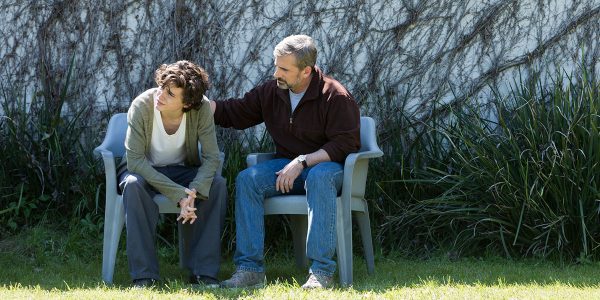At the world premiere of “Ben is Back” at the Toronto International Film Festival last week, writer and director Peter Hedges discussed the reason he built his film about addiction around a single day. The day-in-the-life conceit puts Hedges in a position of creating tensions that threaten to become too much for the film to sustain, but his response for showing Ben’s journey in one day revealed a thoughtful director aware of his subject. Hedges began to weep, noting persons he knows who have succumbed to addiction as well as mentioning the larger socio-political issues the film acknowledges. For him, a film attempting to trace Ben’s addiction over a period of months, or years, runs the risk of trying to do much. By viewing just a day in Ben’s life, the film avoids overwhelming us with too much context. And instead of being a film about addiction, it manages to take on larger value. It is a film about a mother who will do whatever she can to keep her drowning son afloat.

I kept thinking about Hedges’ argument while I watched another addiction drama at TIFF, “Beautiful Boy” based on a true story of a journalist struggling to keep his son sober, directed and co-written by Felix Van Groeningen. “Beautiful Boy” is expansive and comprehensive whereas “Ben is Back” is specific and small. It traces Nic Scheff’s journey for years, even journeying to his childhood for some specific moments. It too is a film about a parent trying to keep a drowning son afloat; this time it is a father. In some ways, “Beautiful Boy” as a based-on-a-true-story narrative suggests a film that is more immediately affecting, just for the reality of its incidents. And, yet, the actual films that the two similar, yet dissimilar stories result in makes for an interesting consideration of the dynamics of addiction for the young, white and middleclass.
About fifteen minutes into “Ben is Back,” as a family works to prepare for the brief visit of a (former?) drug addict back to their house, there’s a throwaway line that exists on the periphery but feels deliberate and pointed in 2018. “You know if he was black he would be in jail, right?” Courtney B Vance’s Neal Burns, remarks. He’s married to Holly, (Julia Roberts), whose son is in rehab for opiod addiction. Holly has two children from a previous marriage and two additional children with Neal. Ben ventures back for Christmas Day without any warning and what at first becomes an awkward, if mildly humorous, comedy of errors becomes an uncomfortable and then devastating look at the reach of addiction. The interracial marriage of Holly and Neal is not a macro point of the film, and there are only a few brief nods to the social ramifications of the interracial union. But even as “Ben is Back” turns a focussed look at the relationship between Ben and his mother, the film is aware of how lucky Ben is, there’s a larger awareness of Ben’s luckiness and the socio-political situation in the USA at the moment. Recovering from addiction, is oftentimes a privilege available for those who can afford it. “Beautiful Boy” makes keen attempts to wrestle with this privilege. Nic’s spiral into addiction is relentless, and his cavalier reaction to those trying to help him make him difficult to sympathise with. Even as the film devotes so much time to his ups and down, there’s an opacity to his relationship with those around him – even his father. I’m not sure if it’s a sign of the film’s screenwriters or the memoir that inspires it.

During the Q&A after the premiere of the “Ben is Back,” Hedges explained that spending a film looking at weeks, or months, of addictions posed an unnerving problem. By limiting the film to a day, he hypothesised that he was able to bring more nuance to the film. I kept thinking about this point during “Beautiful Boy,” which seemed to suffer the more time we spent with Nic. For all the warmth Timothee Chalamet tries to imbue in the character, Nic is not someone we ever truly understand. And, this is part of the film’s intention, I suspect; it’s a film that’s an ode to the love of a parent. On purely emotional levels, both films offer two key aspects of children as addicts – the essential value of the parents as caretakers. Julia Roberts, from the opening shot, is in fierce control of the film, exuding a maternal instinct that is aggressive and funny but also warm and wholesome. The performance provides her with an opportunity for comedy but moves beyond this and allows her key dramatic leeway for the very dramatic climax, when it comes. The mother/son dynamic is built on the easy chemistry that Lucas Hedges (Peter’s son) has with Roberts so that the first major explosion (funny, terrifying, worrisome and more) in the changing room of a department store immediately invokes our attention. It’s a marvellous performance and one of the stronger ones of the festival.
The actual film begins to buckle under the weight of a swift change of genre about half way through. Hedges and Roberts are still a formidable pair but the film begins to teeter slightly out of control with an ending that feels more effortful as it hurtles towards its climax. “Beautiful Boy,” true to its discursive form has an ending that feels more like a comma than a full-stop. Perhaps both Hedges and Van Groeningen are trying to emphasise the unpredictability of a life of addiction, but I’m not sure it always works. The latter’s film seems sometimes trapped by its source material. Even as “Beautiful Boy” covers a longer time, the expanded timeline seems to curtail Steve Carrel’s ability to shine as the father. We spend so little time with Nic and his father as humans removed from his addiction woes, it gives Carell a too-small register to play with. The film teases more nuance, but never fully develops it.
Incidentally, “Ben and Back” and “Beautiful Boy” are only two of eight films I’ve seen over the course of the festival that explore someone’s drug addiction. A recurring theme through Q&A sessions at the festival was the fraught political state of the United States within the word. It has made for a socially aware but also a fairly dismal string of films. When the final credits rolled on both films, the audience was silent – not for lack of appreciation, but we felt as if we had been pulverised. Even as “Beautiful Boy” works less effectively as a piece of art, it’s hard to argue with its thesis. Both films present the world of addiction as unavoidable and bleak. It’s not information we didn’t know before, but it’s hard to devalue them even if they don’t always succeed.

